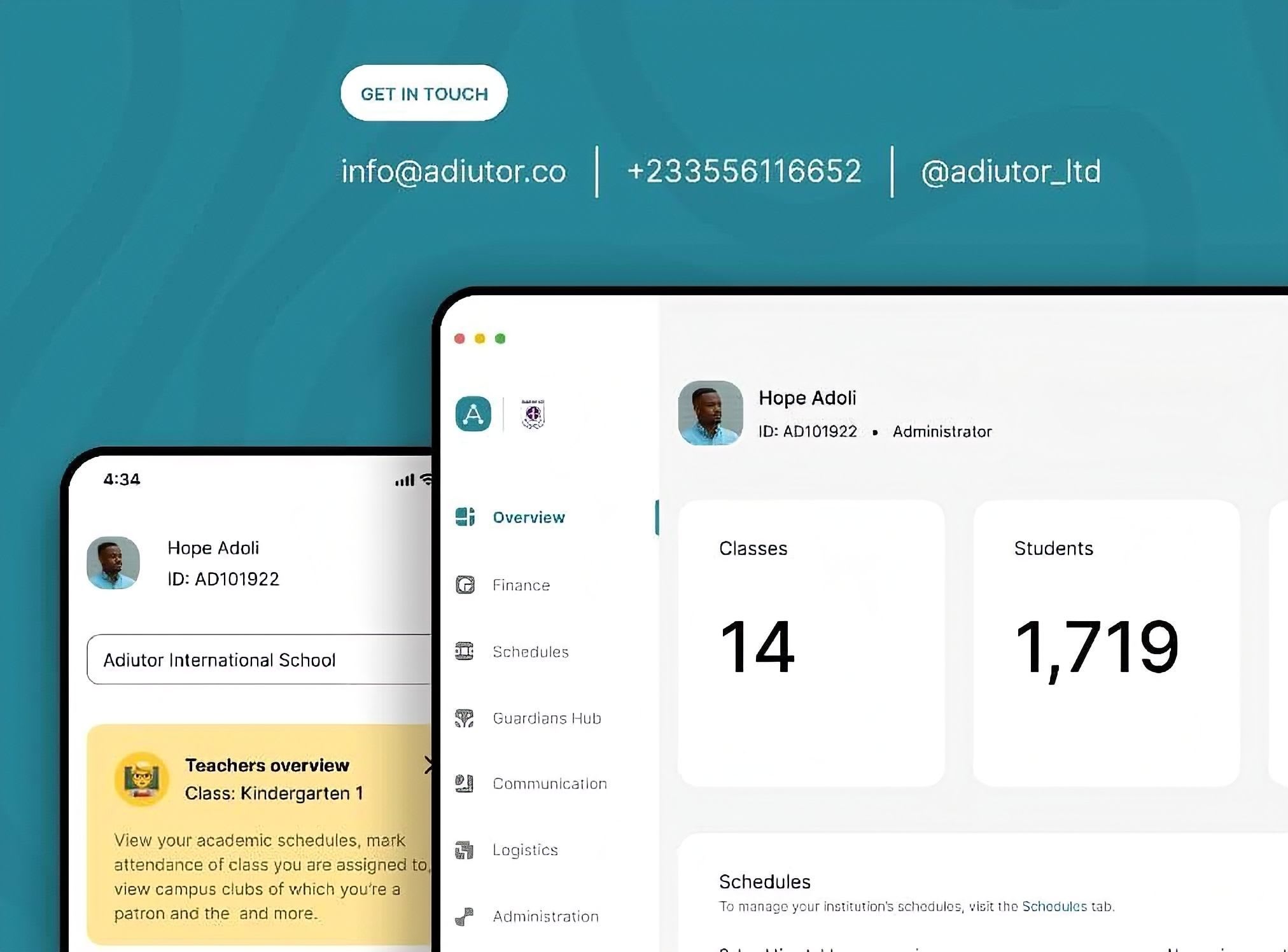Data-Driven Decision Making in Effective School Leadership
Data-driven decision making involves collecting, analysing, and using data to guide school improvement efforts. This means strengthening professional judgment by grounding it in evidence.

Schools today face a wide range of demands. From improving student performance and managing resources to supporting staff development and responding to parent concerns, leadership decisions can have long-lasting effects. Making these decisions based on habit or instinct may have worked in the years past, but the complexity of modern education calls for a more intentional approach.
Data-driven decision making involves collecting, analysing, and using data to guide school improvement efforts. This means strengthening professional judgment by grounding it in evidence. Data becomes a tool that helps school leaders understand what is happening, identify areas for growth, and measure the impact of their strategies.
What Counts as Useful Data in Schools
When people hear the word “data” in schools, the first thing that often comes to mind is test scores. While assessment results are certainly one form of data, they’re just the tip of the iceberg. In practice, effective school leadership draws on a much broader and more nuanced set of data points:
1. Student Learning Data
This includes more than just end-of-term results. Formative assessments, exit slips, rubrics, classwork, and even informal checks for understanding provide real-time feedback. They allow teachers and leaders to identify learning gaps early, adjust instruction, and target interventions where they are needed most.
2. Behaviour, Attendance, and Engagement Data
Behavior logs, attendance records, and even metrics like time-on-task or assignment completion help leaders understand what might be affecting a student’s ability to succeed. Patterns in absenteeism, for instance, often correlate strongly with academic decline. If a group of students begins showing increased behavioural incidents during a particular term, that may signal wider issues, perhaps changes in the school environment, teaching staff, or emotional well-being. These types of data offer early warning signs and allow leaders to intervene before performance drops significantly.
3. Demographic and Equity Data
Disaggregated data by gender, language proficiency, socioeconomic status, or disability status helps uncover equity gaps. When analysed alongside achievement and engagement data, demographic information reveals trends that a school might otherwise overlook.
4. Perception Data
How do students feel about school? What do teachers believe about their capacity to meet learners' needs? What do parents think about the school? These are perception-based questions, and they often come with valuable answers. Collected through surveys, interviews, or feedback forms, this type of data assists leaders in assessing culture, relationships, and trust factors known to impact academic outcomes
5. Process and Operational Data
Useful data also comes from systems: scheduling patterns, intervention delivery, professional development attendance, budget allocations, or resource usage. For example, your school may be investing heavily in a reading intervention, but operational data may reveal that students only receive support once every two weeks due to scheduling issues.
Turning Data into Action
So, how do we move from numbers to impact?
Start by asking better questions. Instead of jumping straight into solutions, pause and dig deeper. Why are Year 8 boys falling behind in writing? Are our interventions closing gaps or just keeping students busy? Is that spike in behaviour referrals linked to a school policy change or staff turnover? These questions help you get past the surface and uncover root causes. The goal isn’t to find someone to blame, it’s to find the story behind the data.
Then focus on strategic follow-through. Suppose your mid-year math data shows that students are struggling with multi-step problems. What’s the next move? Maybe it’s co-planning with teachers to embed reasoning strategies into lessons. Maybe it’s shifting a TA’s timetable to support targeted students. Every action you take should connect back to a specific insight from your data. This keeps your leadership grounded and your team focused.
Be timely. If you wait until the end of the term to review what’s working, you’ve already missed a chance to adjust. Build shorter feedback loops half-termly, monthly, even weekly in some cases. It doesn’t have to be a full data review each time. Sometimes, just looking at a few indicators is enough to guide a quick intervention or prompt a discussion with a teacher.
Create space for data conversations. Too often, data gets stuck at the leadership level. But when teachers, middle leaders, and support staff are part of the process, data becomes a shared tool, not a top-down directive. Use staff meetings, learning walks, or department reviews to ask: What are we seeing? What’s working? What do we need to shift? These collaborative conversations help turn data into action, and action into culture.
Stay flexible. Not every dip in performance needs a new initiative. Sometimes, data tells you to stay the course or to fine-tune what’s already working. As a leader, your job isn’t to react to every number but to respond to patterns.
Building a Culture That Supports Data Use
Even the best data systems and tools won’t make a difference if the school culture isn’t ready for it. This is where leadership plays a defining role, not just in choosing what data to use, but in shaping how people relate to it. If we want data to lead to real improvements, we need to create a culture where data is trusted, understood, and used regularly.
Start with purpose, not pressure. In some schools, data systems get a bad name because they're tied only to accountability or inspection. Teachers feel like data is being used to catch them out, and they attack the whole process to shut it down. That’s why the way you introduce and frame data matters. Position it as a tool for learning, not just for students, but for staff too.
Model data curiosity. As a leader, your own relationship with data sets the tone. You permit others to do the same when you ask thoughtful questions, admit what you don’t know, and show a willingness to learn from the evidence. Curiosity creates psychological safety.
Build staff confidence. Not everyone is comfortable interpreting numbers, and that’s okay. Data literacy is a skill. Offer support through professional learning, simple protocols for data discussions, and clear visuals that reduce complexity. You don’t need fancy dashboards; often, a well-designed table or graph can prompt better questions.
Encourage collaborative data use. One of the most effective ways to embed data use is through team routines, like data reviews in department meetings or pupil progress discussions in year-level teams. They’re about bringing multiple perspectives to the table, identifying trends, and deciding on next steps together.
Be patient, but persistent. Cultural change takes time. Early on, some teachers may be hesitant and others may jump in quickly but get overwhelmed. Keep the focus simple: What are we seeing? What does it mean? What can we try next? And most importantly, did it work?
Sustaining Data-Driven Leadership Over Time
Once data use becomes part of how your school operates, the next challenge is keeping it going and growing.
Start by aligning data interpretations and inferences with your school’s long-term vision. If data use is always linked to a short-term goal (like improving this year’s test results ), it won’t last. But when it's connected to your school’s core mission, it becomes part of the strategy. Leaders should make those connections visible in planning documents, staff meetings, and everyday conversations.
Make it part of your leadership routine. Sustainable use of data requires regular attention. Schedule data review meetings, build data reflection into learning walks, and follow up on past action steps. Think of this as “slow leadership”, small, regular moments of analysis and conversation that build clarity and momentum over time.
Keep improving your tools and processes. As your school becomes more confident with using data, the way you collect and share it should evolve. That might mean streamlining how assessments are recorded or improving access to visuals like dashboards. What worked in the first year may need refining later. Keep listening to feedback from staff and adjust the systems as needed.
Nurture distributed leadership. You don’t have to carry the data work alone. Build leadership capacity across your staff. Empower heads of department, year leads, or curriculum coordinators to lead data conversations in their teams.
Celebrate what’s working. Data should help us track progress, not just highlight problems. Make time to notice and share improvements, whether it’s a rise in attendance, a reduction in behaviour incidents, or progress in a key subject area. Recognising success builds trust in the process and reminds everyone why the work matters.

Adiutor
Adiutor means "helper" - we do just that, by taking a load of your school administration and helping you focus on what matters most: the kids.
REFERENCES
Bernhardt, V. L. (2016). Data analysis for continuous school improvement (4th ed.). Routledge.
Datnow, A., & Park, V. (2014). Data-driven leadership. Jossey-Bass.
Hamilton, L., Halverson, R., Jackson, S., Mandinach, E., Supovitz, J., & Wayman, J. (2009). Using student achievement data to support instructional decision making
Mandinach, E. B., & Gummer, E. S. (2016). Data literacy for educators: Making it count in teacher preparation and practice.
Wayman, J. C., Cho, V., & Shaw, S. F. (2009). Student data systems for instructional improvement: Best practices from district leaders. University of Texas.
Balfanz, R., & Byrnes, V. (2012). The importance of being in school: A report on absenteeism in the nation’s public schools.
Black, P., & Wiliam, D. (2009). Developing the theory of formative assessment.
Bryk, A. S., & Schneider, B. (2002). Trust in schools: A core resource for improvement.
Leithwood, K., Louis, K. S., Anderson, S., & Wahlstrom, K. (2004). How leadership influences student learning.
Love, N., Stiles, K. E., Mundry, S., & DiRanna, K. (2008). The data coach’s guide to improving learning for all students: Unleashing the power of collaborative inquiry. Corwin Press.
Sugai, G., & Simonsen, B. (2012). Positive behavioral interventions and supports: History, defining features, and misconceptions.
